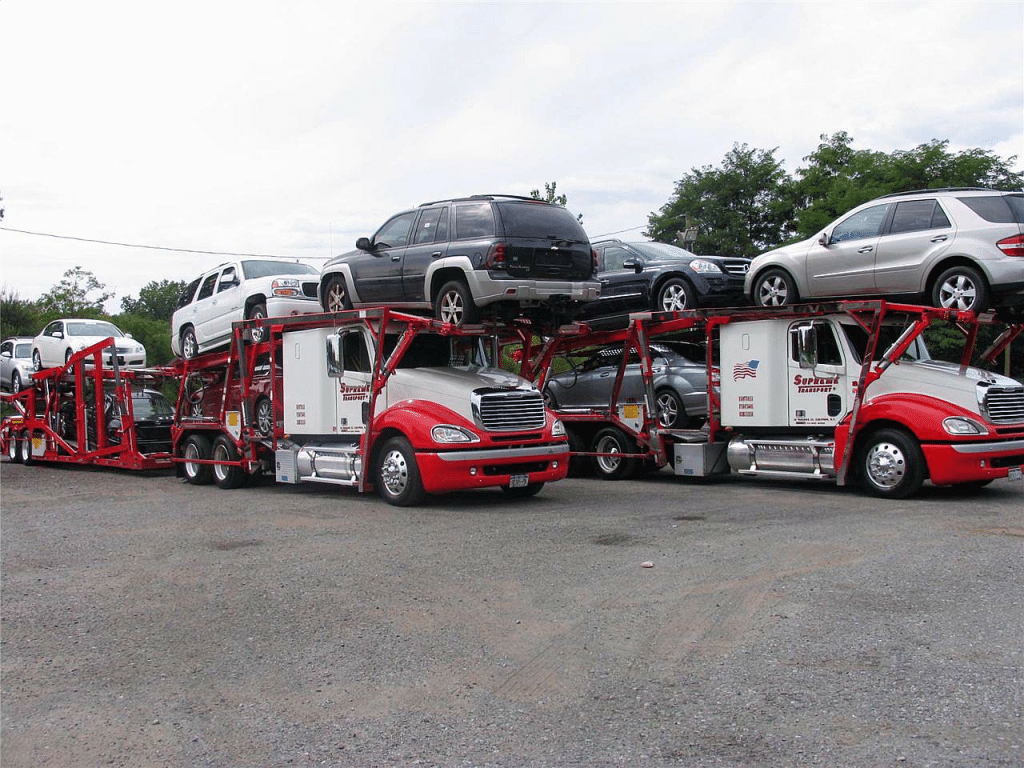Introduction To Electric Cars In Hawaii
As the world increasingly shifts toward sustainable transportation, Hawaii emerges as a unique landscape for electric vehicles (EVs). With its stunning natural beauty, diverse ecosystems, and an ambitious commitment to renewable energy, the Hawaiian Islands present both opportunities and challenges for electric car adoption. The state aims to reduce its dependence on imported fossil fuels while addressing environmental concerns associated with traditional gasoline-powered vehicles.
This makes electric cars an appealing solution, especially in a region where high fuel prices often strain residents and businesses.
Hawaii’s geography plays a significant role in shaping the suitability of EVs for its roads. The islands feature diverse terrains—from coastal highways to mountainous routes—requiring vehicles that can handle varying conditions while maximizing efficiency. Moreover, Hawaii’s warm climate is conducive to battery performance; electric cars tend to operate more effectively in warmer temperatures compared to extreme cold.
Charging infrastructure is another critical component of the transition to electric mobility in Hawaii. In recent years, local governments and private entities have made substantial investments in expanding charging stations across the islands. With initiatives promoting solar-powered charging solutions, EV owners can harness the state’s abundant sunshine to power their vehicles sustainably.
As residents become more environmentally conscious and seek cost-effective alternatives for daily commuting, interest in electric cars continues to grow. With a blend of innovative technology tailored for island living and proactive policies encouraging eco-friendly practices, Hawaii is not just adopting electric cars; it is setting an example of how sustainable transportation can thrive amidst unique challenges presented by geography and climate.
Unique Challenges Of The Hawaiian Climate
The Hawaiian climate presents unique challenges that significantly impact the performance and usability of electric cars. With its tropical environment, Hawaii experiences high humidity levels, which can affect battery efficiency and longevity. Electric vehicles (EVs) rely heavily on their battery systems, and excessive moisture can lead to corrosion or degradation over time. Additionally, the consistent warmth of the islands can cause batteries to overheat, necessitating advanced thermal management systems to ensure optimal operating temperatures.
Another challenge arises from Hawaii’s diverse terrain. The islands boast a mix of coastal roads, mountainous regions, and winding paths that demand different driving dynamics and power outputs from electric vehicles. Steep inclines can strain EVs more than flat terrains, possibly impacting range and acceleration. Manufacturers need to consider these factors when designing electric cars suited for the islands’ varied landscapes.
Moreover, the limited charging infrastructure across the islands poses a significant obstacle for potential EV owners. While urban areas may have more charging stations, rural regions often lack adequate access points, making it essential for manufacturers to focus on creating vehicles with longer ranges that minimize “range anxiety.” This concern is heightened by Hawaii’s isolation; parts must be shipped from mainland suppliers, potentially leading to longer wait times for repairs or replacements in case of breakdowns.
Lastly, environmental considerations are paramount in Hawaii’s efforts toward sustainability. The state’s commitment to reducing carbon emissions aligns with the adoption of EVs but requires manufacturers to prioritize eco-friendly materials and production processes while ensuring their cars are resilient against salt air corrosion and UV exposure prevalent in island environments. Addressing these challenges is crucial for developing electric vehicles that thrive in Hawaii’s unique climate while promoting a greener future.
Key Features To Look For In Electric Cars For Hawaii
When considering electric cars suitable for the unique Hawaiian climate, several key features stand out to ensure optimal performance and sustainability. Firstly, battery efficiency is paramount. Hawaii’s warm temperatures can influence battery performance and longevity; therefore, choosing an electric vehicle (EV) with a robust thermal management system helps maintain optimal operating temperatures. This not only enhances efficiency but also extends the lifespan of the battery.
Another critical aspect is regenerative braking capability. In Hawaii’s hilly terrain, vehicles frequently ascend and descend steep roads. An EV that effectively harnesses energy during braking can significantly enhance overall range and efficiency, making it particularly advantageous for island driving.
Additionally, consider the vehicle’s air conditioning system. The tropical climate necessitates a reliable cooling system that doesn’t drain the battery excessively. An efficient HVAC system designed to minimize energy consumption while providing comfort is essential for any electric car in Hawaii.
Durability against saltwater corrosion is also vital due to Hawaii’s coastal environment. Electric cars equipped with corrosion-resistant materials or coatings will withstand exposure to ocean air better than others, ensuring longevity and reducing maintenance costs over time.
Lastly, local charging infrastructure should be taken into account when selecting an electric vehicle in Hawaii. Models that are compatible with various charging stations throughout the islands will provide greater convenience for daily use and road trips alike.
In summary, when searching for an electric car tailored to Hawaiian conditions, prioritize battery efficiency, regenerative braking capability, effective climate control systems, durability against corrosion, and compatibility with local charging infrastructure to ensure a seamless driving experience in this beautiful paradise.
Top Electric Car Models Suited For Tropical Conditions
When considering electric cars suited for Hawaii’s tropical climate, it’s essential to focus on models that excel in both performance and sustainability while adapting to the unique conditions of the islands. The ideal vehicles should not only offer impressive range and efficiency but also withstand the humidity, heat, and occasional downpours characteristic of Hawaiian weather.
One standout option is the Tesla Model Y, which combines a spacious interior with cutting-edge technology. Its advanced battery management system ensures optimal performance even in high temperatures, making it a reliable choice for island driving. With its all-wheel-drive feature, it handles wet roads with ease, providing safety and stability during sudden rain showers.
Another excellent contender is the Ford Mustang Mach-E. This electric SUV boasts a robust build designed to resist corrosion from salty air—an important factor for coastal regions like Hawaii. Its spacious cabin and impressive range make it perfect for both daily commutes and weekend adventures exploring the islands.
The Hyundai Kona Electric also deserves mention; compact yet versatile, it offers a comfortable ride while ensuring efficiency in energy consumption. Its regenerative braking system helps extend range while navigating hilly terrains typical of Hawaii’s diverse landscapes.
Lastly, the Nissan Leaf has long been a favorite among eco-conscious drivers due to its affordability and practicality. With sufficient cargo space for beach gear or groceries from local markets, it’s an ideal choice for residents embracing sustainable living in paradise.
Ultimately, selecting an electric vehicle tailored to Hawaii’s climate means prioritizing durability against humidity and ensuring efficient energy use—all while enjoying the island’s stunning scenery on every drive.
Charging Infrastructure: Options And Accessibility In Hawaii
As electric vehicles (EVs) gain traction in Hawaii, the state’s charging infrastructure plays a crucial role in supporting the transition to cleaner transportation. The unique geography and culture of the islands present both challenges and opportunities for EV adoption. In urban areas like Honolulu, charging stations are increasingly integrated into public facilities, shopping centers, and workplaces, making it convenient for residents and visitors alike to recharge their vehicles.
However, the more remote regions of Hawaii still face gaps in accessibility that need to be addressed.
Hawaii’s commitment to sustainability has spurred initiatives aimed at expanding its charging network. Government programs encourage private businesses and homeowners to install Level 2 chargers while promoting fast-charging stations along major highways, ensuring that long-distance travel between islands is feasible for EV drivers. The state’s vision emphasizes creating a seamless experience where drivers can easily locate available chargers through user-friendly apps that display real-time availability.
Moreover, Hawaii’s reliance on renewable energy sources enhances the appeal of electric cars in an environment characterized by abundant sunshine and wind. Many charging stations harness solar power or wind energy, aligning with the state’s goal of achieving 100% clean energy by 2045. This synergy not only reduces greenhouse gas emissions but also fosters a sustainable ecosystem for EVs.
However, as this infrastructure expands, collaboration among stakeholders—government agencies, utility companies, and local businesses—will be essential to ensure equitable access across all islands. Addressing disparities in charging availability will help alleviate range anxiety among potential EV owners and drive further adoption of electric vehicles throughout Hawaii’s diverse landscapes.
Environmental Benefits Of Electric Vehicles In Island Ecosystems
Electric vehicles (EVs) offer significant environmental benefits, particularly in island ecosystems like Hawaii, where the delicate balance of nature is paramount. One of the most pressing issues on islands is the vulnerability of local environments to pollution and climate change. Traditional gasoline vehicles contribute substantially to air and noise pollution, which can disrupt wildlife habitats and degrade the quality of life for residents.
By contrast, EVs produce zero tailpipe emissions, significantly improving air quality and reducing harmful pollutants that can affect both human health and native species.
In addition to their cleaner operation, electric vehicles can play a pivotal role in mitigating climate change—a critical concern for island communities facing rising sea levels and increased storm intensity. By decreasing reliance on fossil fuels, EVs help reduce greenhouse gas emissions that contribute to global warming. This is especially important in Hawaii, where coral reefs are threatened by temperature fluctuations and acidification resulting from climate changes driven by carbon emissions.
Moreover, many EVs can be powered by renewable energy sources such as solar or wind power, which are abundant in Hawaiian ecosystems. This synergy not only further decreases reliance on imported fossil fuels but also promotes sustainable energy practices that align with the islands’ commitment to preserving their natural beauty and biodiversity.
The shift toward electric vehicles embodies a holistic approach to sustainability—one that supports local economies through reduced fuel costs while safeguarding fragile ecosystems from degradation. As Hawaii moves toward a more sustainable future, embracing electric mobility will be key in protecting its unique environment for generations to come.
Conclusion: Embracing Sustainable Transportation In Hawaii
In conclusion, embracing sustainable transportation in Hawaii is not just a necessity but an opportunity to preserve the unique beauty and ecological integrity of the islands. The shift toward electric vehicles (EVs) reflects a broader commitment to reducing carbon footprints and promoting cleaner air, which is particularly vital for Hawaii’s fragile ecosystems. With its stunning landscapes, diverse wildlife, and rich cultural heritage, Hawaii stands to benefit immensely from the transition to EVs designed specifically for its climate.
Electric cars tailored for Hawaiian conditions offer numerous advantages. They provide a quieter, smoother ride that enhances the natural tranquility of the islands while minimizing noise pollution that can disrupt local wildlife and communities. Furthermore, as renewable energy sources like solar power become more integrated into Hawaii’s energy grid, charging these vehicles will contribute to a more sustainable energy cycle. This synergy between clean transportation and renewable energy sources not only reduces reliance on fossil fuels but also supports local economies by creating jobs in both the automotive and renewable sectors.
Moreover, adopting electric vehicles aligns with Hawaii’s ambitious goals for sustainability as outlined in initiatives like the Aloha+ Challenge. By prioritizing EV usage among residents and visitors alike, Hawaii can set an example for other regions grappling with climate change challenges.
As we look ahead to a greener future, investing in electric cars built for Hawaiian conditions represents a significant step forward in fostering environmental stewardship while enhancing mobility across the islands. Ultimately, this transition signifies more than just adopting new technology; it embodies Hawaii’s commitment to preserving its natural heritage for generations to come while ensuring that every journey contributes positively to this paradise we call home.









